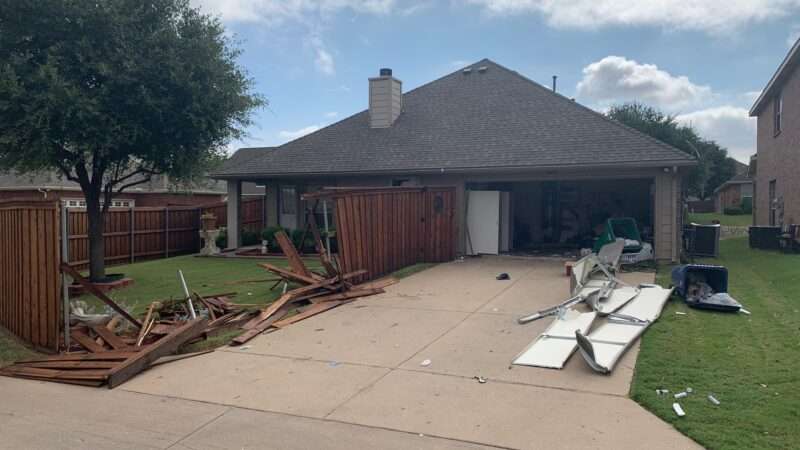My colleague Sherif Girgis passed along these thoughts on Dobbs, which I’m posting with his permission.
—
Will the Supreme Court uphold Mississippi’s ban on abortions after 15 weeks without fully reversing Roe and Casey and restoring rational-basis review to abortion laws? Scholars like John McGinnis and Mark Tushnet have wondered (without endorsement) if the Court might claim to do that by applying Casey‘s rule against “undue burdens” on abortion. This is thought to appeal to the Court as a modest and restrained resolution of Dobbs.
But this approach would flatly misrepresent what Casey meant by “undue burden.” The phrase meant “constructive ban.” It referred to any incidental regulation of the procedure that’s as harmful to abortion access at some gestational stage as a ban would be, and which should thus be treated the same as a ban. Since Dobbs involves an actual ban, the “undue burden” concept is irrelevant here. And trying to fit the concept to this case would transform its meaning. In fact, Dobbs would be replacing Casey‘s doctrine with something wholly new, lacking even partial support in existing legal sources. The resulting abortion right would require a new constitutional justification. And as explained below, that new rationale would have to affirm a minimum-core abortion right that (unlike Roe and Casey) left no analytic room for later cases to permit wider bans based on new judgments of fetal worth or evidence on fetal development. Indeed, having to justify any new doctrine without leaning on other sources would make it hard to keep chipping away at Roe, as the Justices might hope. For that would then require them to contradict not only Roe and Casey but their own case for a new right in Dobbs. Meanwhile, Dobbs‘s new test would be markedly vaguer than Casey‘s, leaving courts more at sea. This would ensure serial litigation by states eager to push the line back, given that 95% of abortions occur before 15 weeks.
If my reading of Casey is right, then, the proposed Dobbs analysis would be more groundless than any abortion opinion since Blackmun’s in Roe, easier to manipulate than the Casey plurality’s, and harder to roll back.
Since the current Court is more formalist than this (or any other) middle ground would allow, and this proposal would have the opposite of the virtues meant to make it appealing to the Court, I think the Court will go all or nothing in Dobbs.
1. Understanding Casey. The Justices’ best hope for minimizing these effects is to rest a halfway ruling on at least part of some precedent. That would relieve them of inventing a new rule and defending it on their own say-so. Hence the proposal to apply Casey‘s rule against undue burdens on abortion. But the proposal misreads what Casey meant by that phrase.
Some critics say Casey‘s “undue burden” test can mean anything you want it to. That would have been true if the word “undue” as used in Casey meant no more than “unconstitutionally restrictive” (or “unconstitutional”). For then the “undue burden” test would simply be telling judges to determine if abortion laws are unconstitutional—without telling them how to. But that’s not what “undue burden” means; it has a more specific and concrete sense given below. And in any event, whatever vagueness plagues the word “undue” is irrelevant to Mississippi’s ban, which is excluded by another, perfectly sharp rule that Casey held onto from Roe. (By contrast, a Dobbs “middle ground” would preserve nothing of Casey and have no sharp edges.)
To see why, start with Roe‘s holdings:
- All abortion regulations trigger strict scrutiny, and thus require a compelling justification.
- The interest in protecting the woman’s safety becomes compelling only in trimester two.
- The interest in protecting fetal life becomes compelling only after viability.
These premises produced three rules:
- No abortion regulations in trimester one.
- Only incidental regulations—for women’s safety—in trimester two.
- No prohibitions (which can be justified only as protections of fetal life) until after viability.
Casey reaffirmed premise C and hence result F (making Casey an actual middle ground between partial and full reversal of Roe).
Casey did reject premise A’s insistence on strict scrutiny of all abortion laws. As Casey said, drawing analogies to voting rights, not every law that “makes a right more difficult to exercise” should be lumped in with bans. With abortion, some incidental regulations—e.g., credentialing requirements for providers—might not curb access by much. So Casey needed a way to pick out which regulations “touching upon” abortion were severe enough to require a compelling justification, just as prohibitions do. These would be laws that posed a “substantial obstacle” to abortions at a given stage, “deterr[ing]” them “as surely as” prohibitions would. And the label Casey picked for them was “undue burdens.” The phrase thus refers to constructive prohibitions: incidental regulations similar—in their impact on abortion at some stage—to actual prohibitions.
Note, finally, why Casey devised this test: to implement the rationale for abortion rights that Casey repeatedly embraced as Roe‘s “central holding” (premise C above). That rationale is all about when a fetus gains enough moral status to provide a compelling justification for abortion bans. As Casey put it: “Before [the fetus attains] viability, the State’s interests are not strong enough to support a prohibition or the imposition of a substantial obstacle to” abortion.
Casey‘s resulting rules:
- No prohibitions until viability (since they still require a compelling interest).
- No incidental regulations that amount to prohibitions (“undue burdens”) until viability (same reason).
- But laws that do not actually or constructively ban pre-viability abortions now face rational-basis review. (This is the only change from Roe.)
This shows why Dobbs can’t exploit the vagueness of “undue.” True, it’s vague which regulations are harsh enough to be undue—i.e., constructive prohibitions. But it isn’t vague what rule applies to laws held to be constructive prohibitions: forbidden until viability (long after 15 weeks). And since the undue-burden concept only tells us which regulations to treat like bans, it isn’t needed for analyzing actual bans (like Mississippi’s). Those are all forbidden until viability.
To sum up: Casey‘s test would have been plastic enough for use in Dobbs if “undue burden” conveyed no more information than “unconstitutional.” Call this the conclusory sense of “undue.” But in fact Casey used “undueness” as a premise—as a way of capturing some independent feature of abortion laws that would serve as an input for courts’ analysis of whether those laws are undue in the conclusory sense (i.e., unconstitutional).
In the conclusory sense, every constitutional rights case is about which laws are “undue.” (We could say Janus found undue burdens on the First Amendment, Heller on the Second.) But in that sense, “undue” isn’t doing analytic work; substantive doctrines are. Whereas in Casey, “undue” was clearly meant as an input. (For one thing, Casey declared two things invalid but called only one “undue”: pre-viability prohibitions and pre-viability undue burdens. And the fact that Casey rejected undue burdens not at all stages, but only until viability, also proves that “undue” was not just another word for “unconstitutional.”) What Casey meant by “undue burdens” was constructive bans, which aren’t at issue in Dobbs. So even if Dobbs were to say it was testing for “undue burdens,” its analysis would be driven by something new. Merely using the word “undue” wouldn’t give Dobbs overlap with Casey beyond what’s common to all constitutional rights cases: a search for what’s undue in the conclusory sense (unconstitutional).
2. Casey and Dobbs. It would therefore take lots of rewriting to uphold a 15-week ban for imposing no “undue burden.” First, the Court would have to erase Casey‘s “no prohibitions before viability” rule. (Never mind that it flows from the same holding about fetal worth as the undue-burden rule.) Next the Court would have to white-out a part of the “no undue burdens until viability” rule itself—the “until viability” part. This would be intended to leave a freestanding “no undue burdens” rule. Then the Court would say it was upholding the 15-week ban without endorsing or rejecting this “no undue burdens” rule since it wouldn’t have to: Either way, the ban would stand because it leaves ample time to abort (up to the 15th week).
Yet even this last move would raze the remaining stump of Casey. So the proposed “middle ground” would retain nothing of Casey. Though stealing a trademark phrase (“undue burden”), Dobbs would intend by the phrase something with a completely novel (a) meaning, (b) doctrinal function, and (c) underlying constitutional justification or rationale for abortion rights.
First, the analysis above shows that under Casey, avoiding “undue burdens” is not about leaving women enough time to decide to abort before bans kick in. Rather, “undueness” is based on the law’s impact on abortion access at a given point in pregnancy. An unduly burdensome law sets too high a hurdle for aborting at some stage. And since “undue burden” just means “law as harmful as a prohibition,” a rule against undue burdens could never allow actual prohibitions, as in Dobbs. (If constructive bans are high hurdles, real bans are brick walls.)
Second, it would defeat the whole function of the undue-burden rule for Dobbs to erase from it any mention of a timeframe. After all, the rule’s entire job is to tell us the times in a pregnancy when constructive prohibitions (“undue burdens”) are unconstitutional.
Third, without a rule to serve this time-related function, Dobbs could never implement Casey‘s (and Roe‘s) “central” rationale for constitutional abortion rights. For that rationale, again, focuses on a key moment in fetal development. It says “the State’s interest in fetal life” is not “constitutionally adequate to justify” (effective) bans until the fetus has matured to the right age.
Concretely, then, if Dobbs upheld Mississippi’s ban for imposing no “undue burden,” the phrase would no longer mean “regulation that has the same impact as a ban,” but “actual ban that applies too early.” This new concept’s doctrinal function would be to tell us how much time a woman must have between learning she’s pregnant and facing an abortion ban. And the constitutional rationale would thus have to be, not that the woman’s interest trumps the fetus’s until the fetus is viable, but a rationale less sensitive to changing judgments of fetal worth at different stages: that one way or another, the Due Process Clause—at a minimum—entitles a pregnant woman to some fair opportunity to abort. (An opinion simply re-calculating the point at which fetal life trumps women’s autonomy would seem especially unlikely here, since such calculations were rejected by the Chief last year as incoherent weighings of incommensurables.)
Likewise, despite a passing suggestion by Mississippi, Dobbs cannot rely on the “large fraction” test used in Casey and later cases by upholding this 15-week law as not affecting a “large fraction” of women seeking abortions. The large-fraction test doesn’t purport to tell us when a woman’s access to a pre-viability abortion is unduly burdened. It tells us how many women’s access must be unduly burdened before a law can be held invalid facially, rather than as-applied. And we already know how large the unlawful fraction is for actual bans like Mississippi’s: 100% of their pre-viability applications are invalid under Casey.
3. Upshots. Embracing a test that only rhymed with Casey‘s would have unintended effects.
First, lacking a toehold in Casey (or other legal sources), the Court would look arbitrary and legislative on a highly charged issue.
Second, Dobbs‘s new rule would bring in tow a new constitutional rationale for an abortion right staked on the Justices’ own authority, making it harder for them to later scale back. True, the Roberts Court has often overruled a precedent in part, or refused to extend it “to situations where it does not squarely control,” only to scrap it later. But it’s another thing to reject a precedent’s doctrine on a legal question (Casey/Roe‘s on abortion bans), and so have to justify a brand-new replacement (in Dobbs), before coming back to reverse your own replacement. (Imagine if the Casey plurality—after replacing Roe‘s “no first-trimester regulations” rule with a “no pre-viability undue burdens” rule—later declared even those undue burdens lawful after all.)
Third, scaling back would be hard also because Dobbs—unlike Roe/Casey—would’ve affirmed an absolute minimum right that isn’t pegged to evolving judgments about the interest in fetal life at different stages. This would leave no room to later uphold more-sweeping bans based on greater deference to state judgments on that interest, or new discoveries in fetal development.
Fourth, unlike Casey, this Dobbs proposal would apply no bright-line rule to bans or anything else. It would presumably use “undueness” to determine both when a regulation is like a ban and when a ban (or constructive ban) starts too early. The resulting test: “No unduly early ‘undue burdens’ on access.” The second layer of vagueness would invite serial litigation of how much time is constitutionally required—15 weeks? 12? 10? 8? 6? A law now before the conservative Sixth Circuit has severable provisions banning abortion from each of these points.
* * *
The “undue burden” concept’s meaning, its doctrinal function, and the rationale for the resulting right announced in Roe and reaffirmed in Casey are of no use to a lukewarm Dobbs. Even if the Justices borrowed Casey‘s signature phrase (“undue burden”), they would have to give it a job, and adopt a corresponding rationale for the resulting abortion right, that contradict precedent, find no support in other sources, confuse courts, and rest little on states’ interest in fetal life. Dobbs would be more slippery than Casey, less grounded, and harder to disown.
The post "Undue Burden" in Dobbs: A Revolution Disguised as a Tweak? appeared first on Reason.com.
from Latest – Reason.com https://ift.tt/3pdWcNf
via IFTTT







